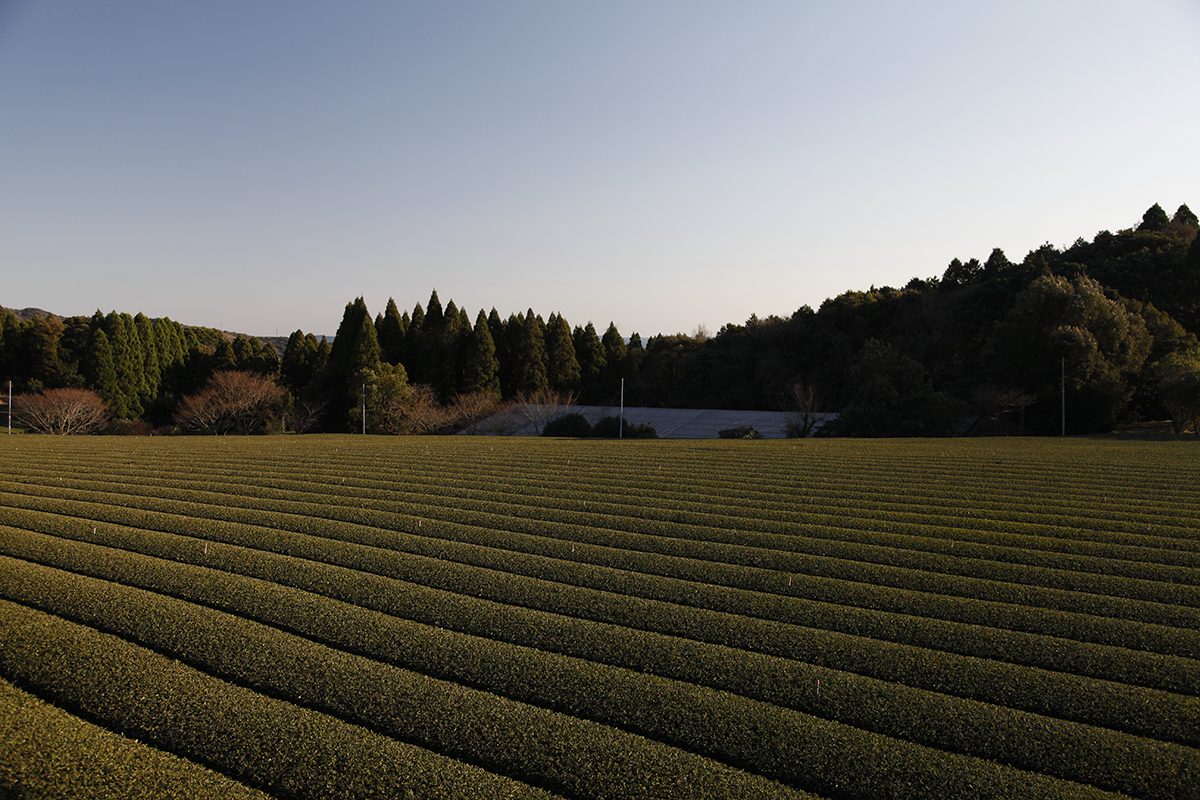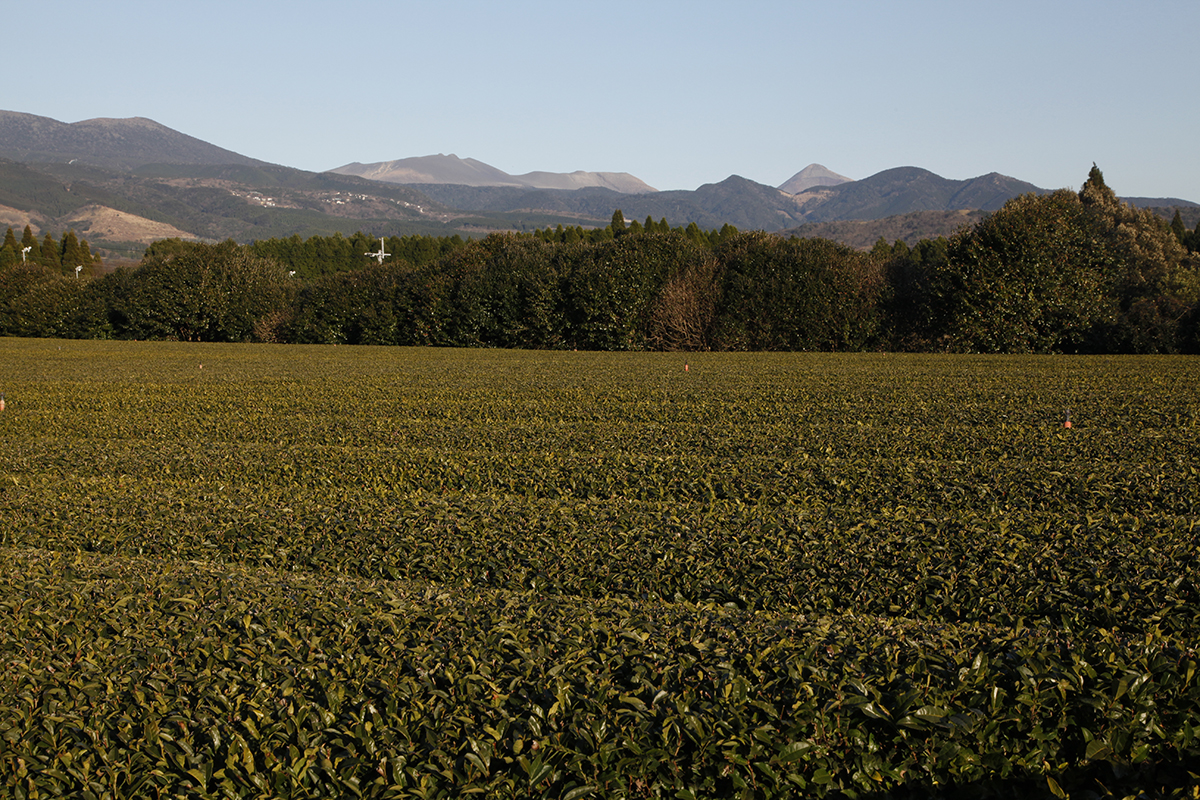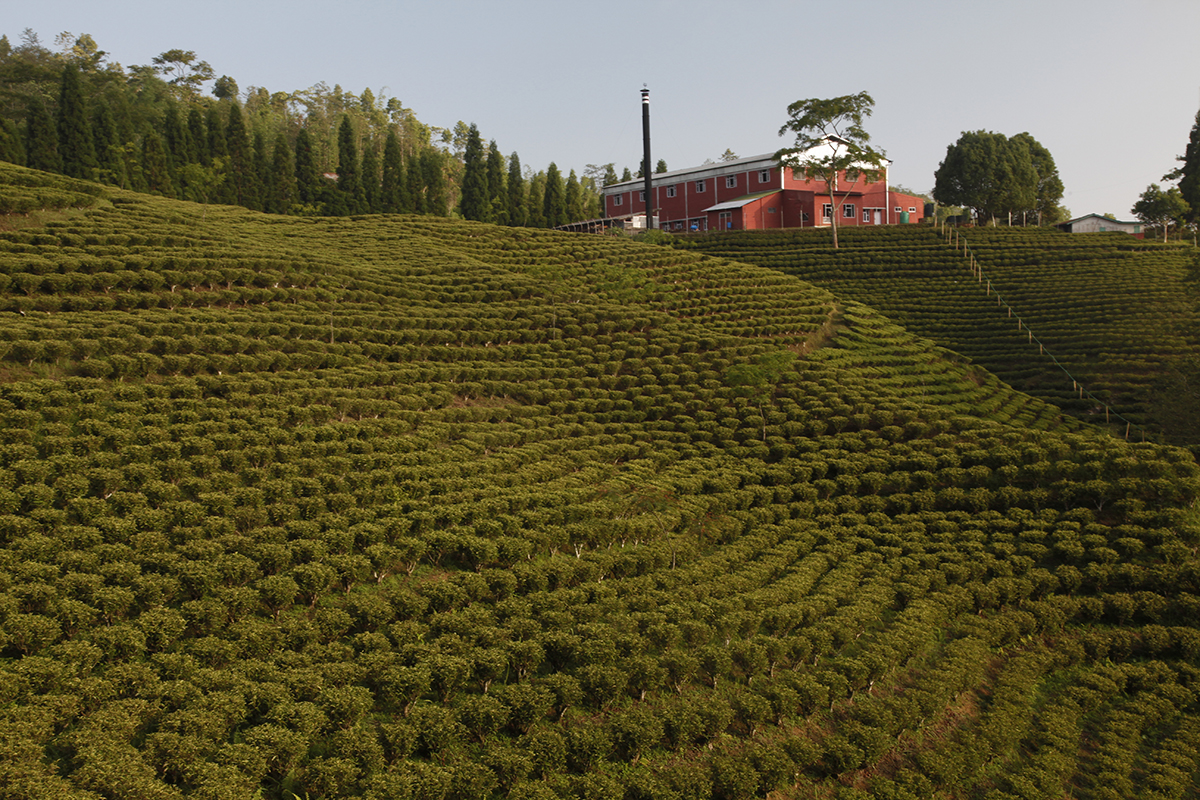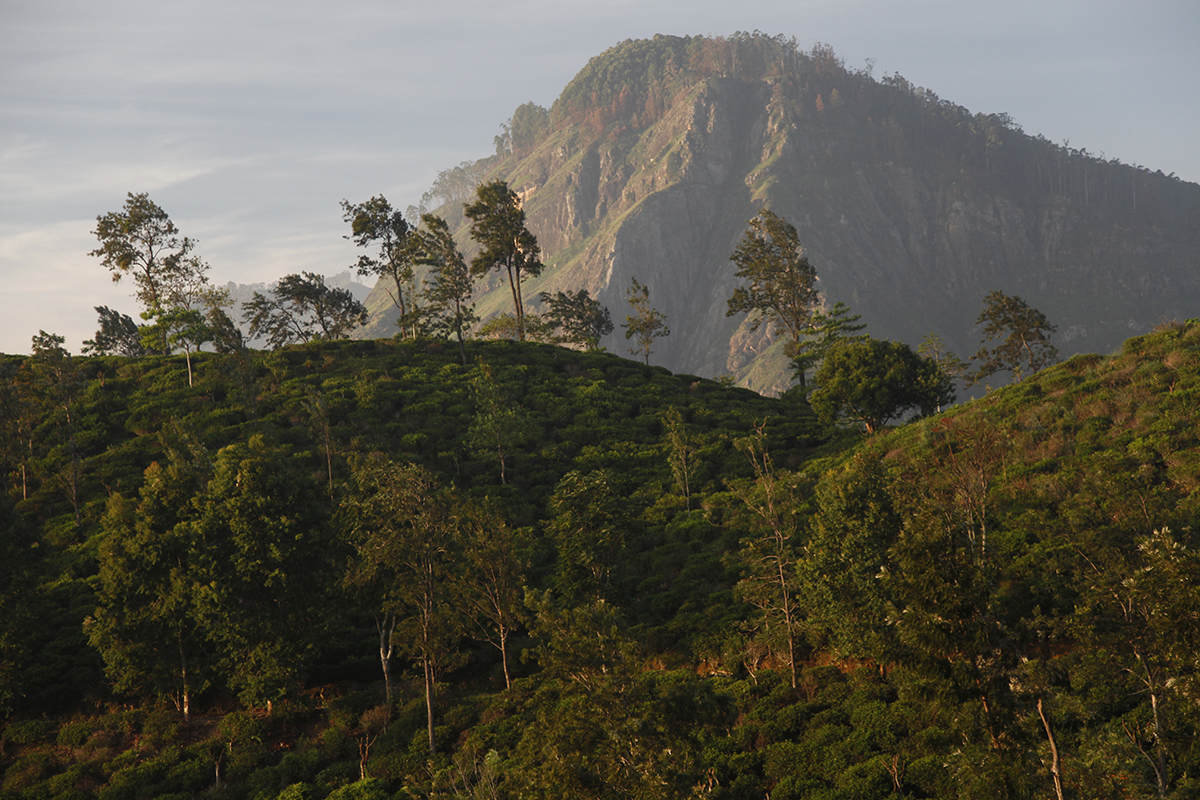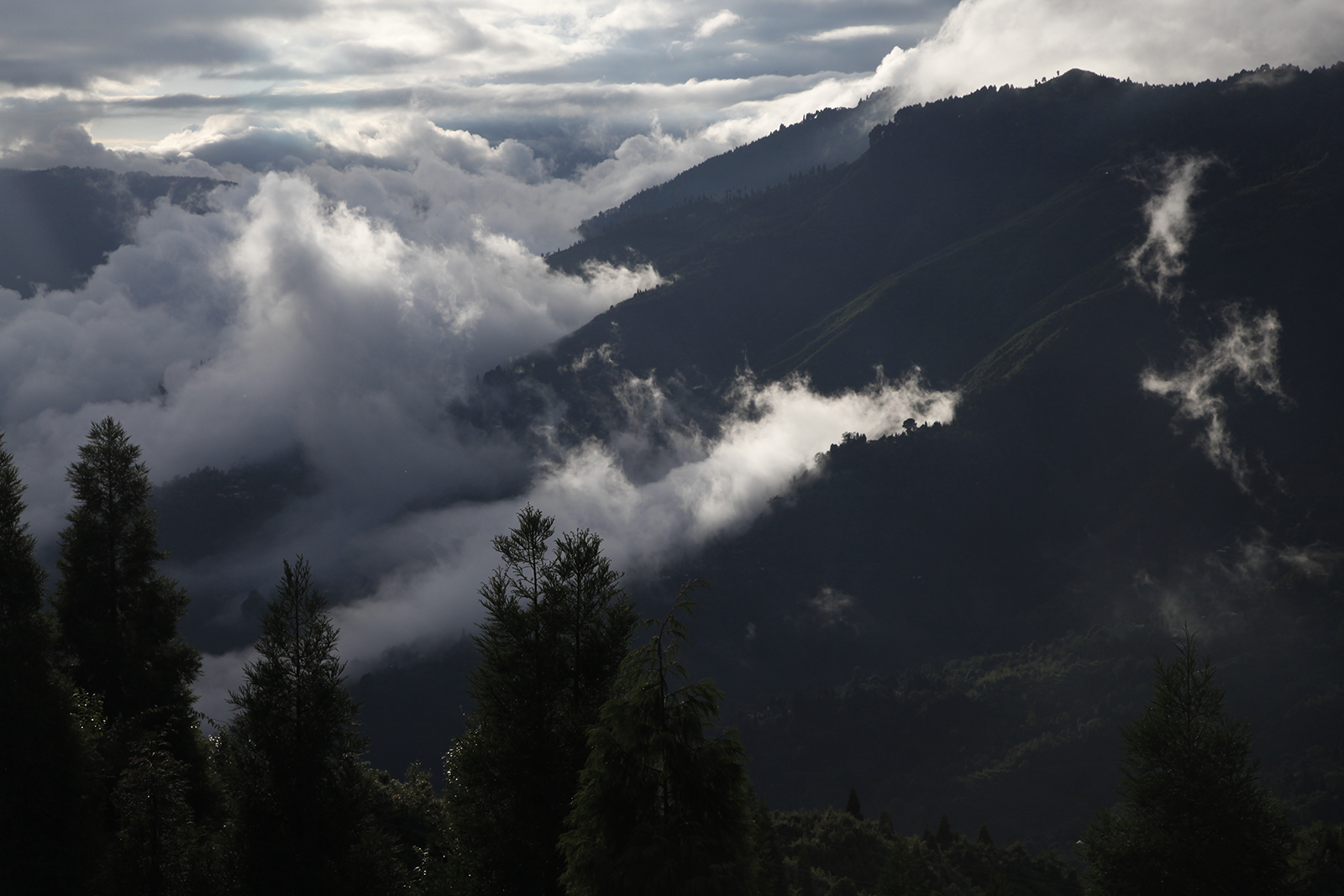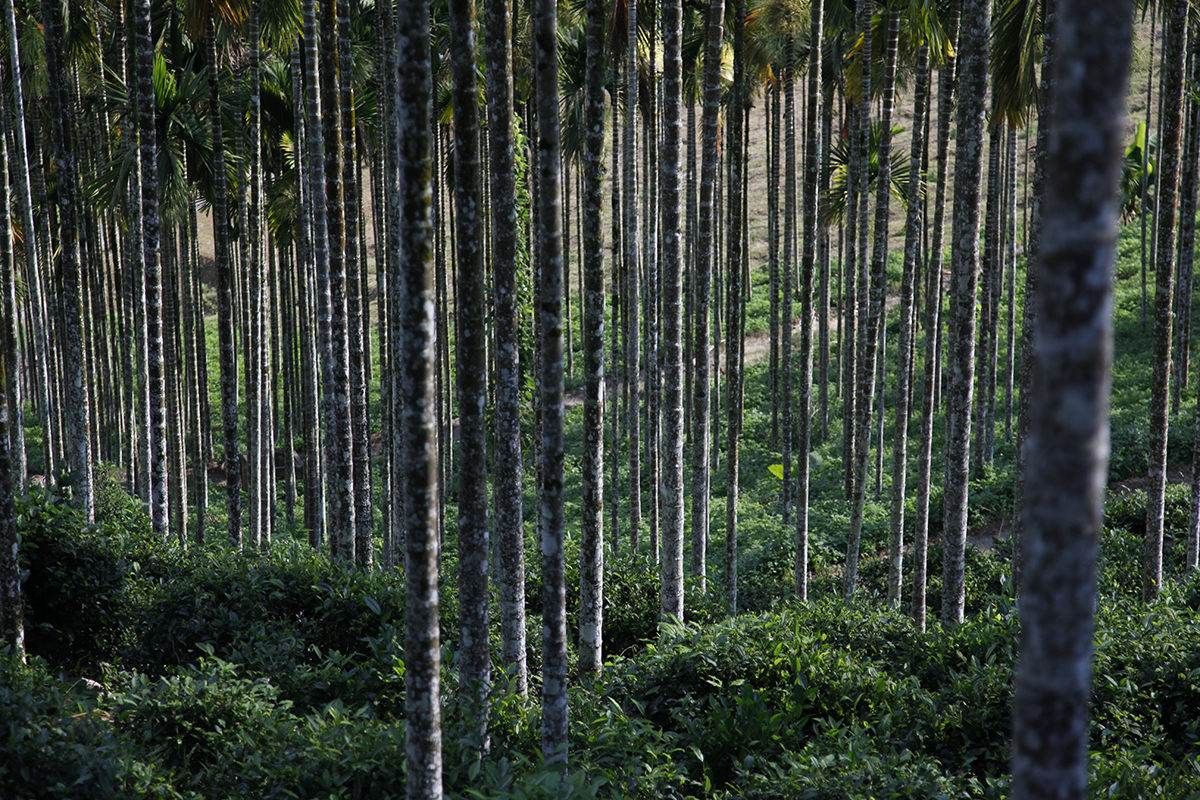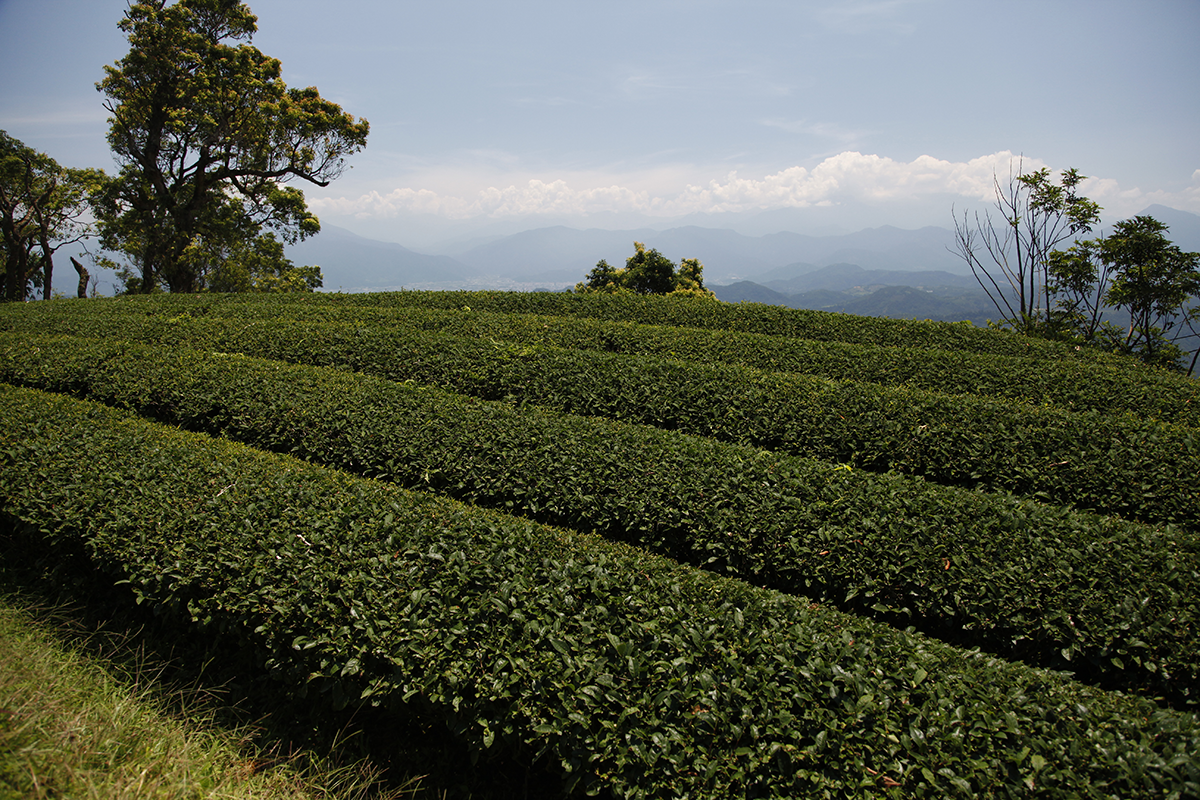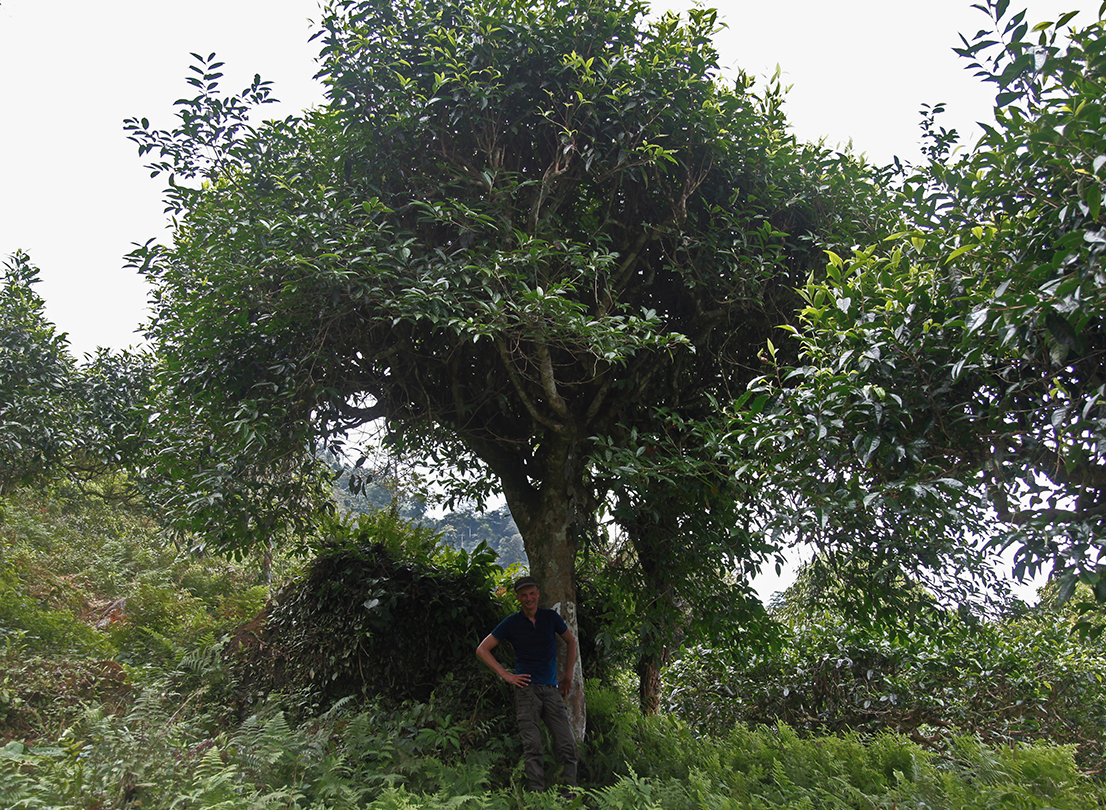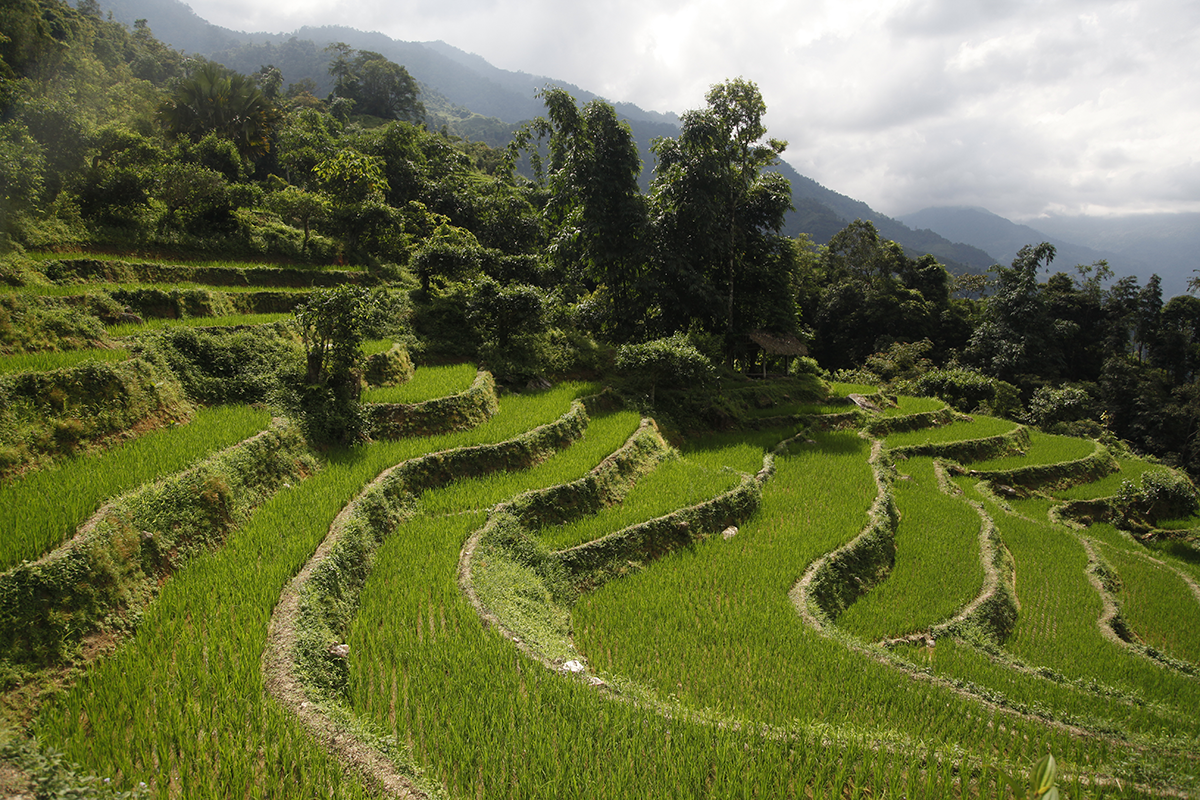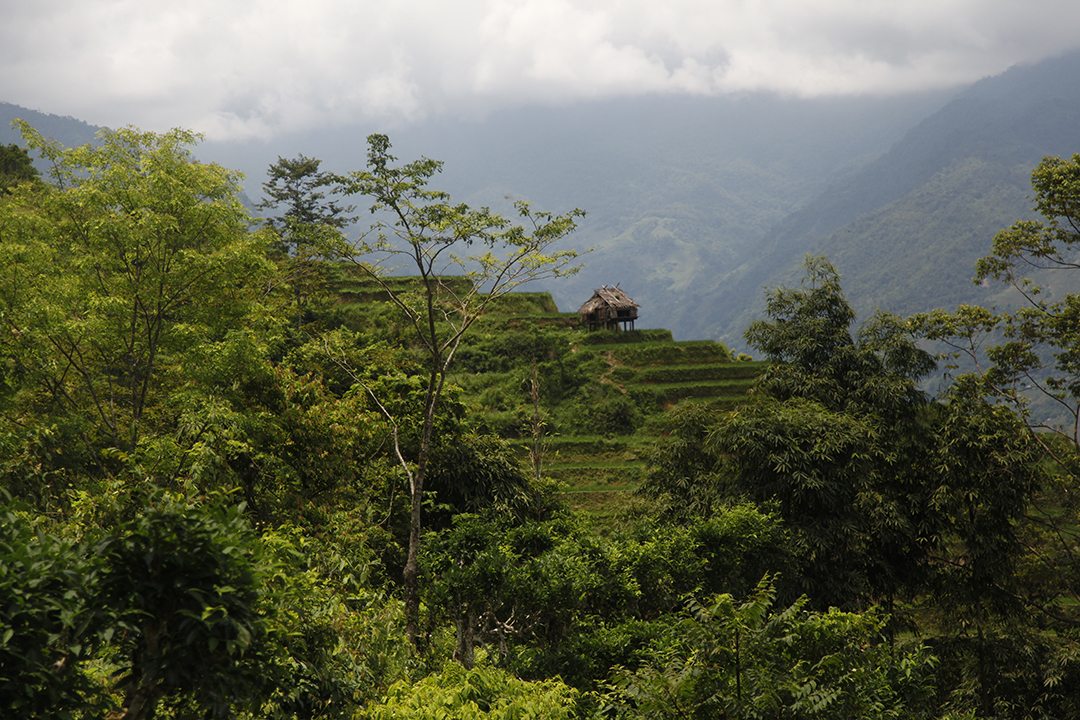In Japan, harvesting is often done by machine due to the high cost of labour. So instead of picking the leaves every week, as is the practice in some parts of the world, they are harvested three times a year, in spring, summer and autumn. On the island of Kyushu, which is hotter than the islands further north, tea can be harvested four times a year – in April, June, August and October. The most prized harvest is the first one, known here and elsewhere in Japan as Ichibancha.
Plantation
A volcanic plantation
In the far south of Japan, the tea fields’ proximity to active volcanoes means the leaves have to be treated in a special way. Several times a year, the volcanoes spew out ash that is deposited on the surrounding land. So once the leaves have been harvested, they are rinsed before the first stage in processing: steaming. The rinsing in cold water lasts for 30 minutes and no longer, to minimise the loss of aromatic compounds.
Kuwapani: a rather unordinary past
Some tea plantations have rather ordinary origins, and the Kuwapani plantation is one of them. A few years ago there was a rundown angora rabbit farm in Kuwapani that was only just limping along. I’m talking about the farm but I’m sure the same could have been said for the poor rabbits, bred for their fur alone. The owner saw a tea plantation being established on the hill opposite, followed by another. He observed the harvesting and processing of the leaves. He developed a taste for what his neighbours, Jun Chiyabari and Guranse, produced, and he witnessed their growing success. Then, one day, he decided to change his business, radically. He opened up the hutches, installed machines in his main building to process the tea leaves (rollers, dryers and so on), planted his land with tea, recruited an experienced, talented man to oversee the work, and a few years later the Kuwapani plantation had made its name in the world of tea. I heard this story while I was staying at Kuwapani and asked the owner about an object that had been intriguing me. On the mantelpiece in the living room sits a magnificent porcelain rabbit.
Little Adam’s Peak
I was incredibly fortunate, when I woke yesterday without knowing exactly where I was, to discover this sublime view from my bed. I’d arrived in Ella late the night before, from Ratnapura, and without the moon I couldn’t get a sense of the landscape. I was woken at 5am by the birds singing, as well as the shrill cries of the squirrels, who were celebrating daybreak in their own way. I went out onto the terrace to enjoy the sight, and I stayed there, taking it all in. This mountain is called Little Adam’s Peak.
I hadn’t been to this beautiful country for a year, and I’m happy to see that in the mountains in the centre of the island, a few factories that used to make teas industrially with a rotorvane machine, which is very rough on the leaves, are now at least trying to make teas the orthodox way, a method that is more respectful of the leaves. They are just attempts, I know, but it’s a promising sign and it’s a pleasure to see that tea planters want to try out new methods, make better teas; that they are curious, and want to improve their quality.
“Land of Storms”
The landscapes of Darjeeling are among the most incredible in existence. Not because they’re better than anywhere else in terms of their beauty, but because of the unique speed with which the scenery in this region changes. You can go from a hailstorm to a beautiful blue sky in less time than it takes to say those words, and the mist can be so thick that sometimes, when walking in these parts, you even lose sight of the ends of your shoes. After all, the name Darjeeling comes from the Tibetan “Dorje Ling”, which means “the land of storms” – here, the skies rule. Naturally, these climatic variations and the extreme temperature changes that accompany them have a major influence on the quality of the tea, which is why, in Darjeeling and in Nepal, the characteristics of teas picked in the spring, summer and autumn differ so much. In no other tea-producing region of the world do we see such variation between teas from one season to another, in terms of their organoleptic qualities
A vertical garden
Tea has a very good character. It gets on well with many plants. Here, high up in Taichung (Taiwan), it has a close relationship with Areca catechu. This palm provides the farmer with a supplementary income and our bushes with a little shade. It also lends an impressive verticality to these tea gardens, which are usually very horizontal.
High teas of high quality
In the centre of the island of Taiwan they produce Gao Shan Chas, high-altitude teas that are rolled into pearls. They are semi-oxidised teas that are withered, then lightly oxidised, roasted, rolled, dried and packaged. In the cup, the best of them develop fresh vegetal notes and a lovely opulent flowery bouquet (rose, hyacinth, jasmine), sustained by buttery, milky notes with an occasional hint of vanilla. These high-quality teas are produced in limited quantities.
300 years old and it still has all its leaves
Here’s what a tea plant looks like when it has been left to grow, rather than being kept low so that its buds and shoots can be picked easily. From what I’ve been told in this far-flung corner of Vietnam, this camellia could be about 300 years old. I’m no expert in dating trees, but what I do know is that some very good teas are made using leaves harvested from these tea plants… (to be continued).
Tea and rice
Tea and rice have a lot in common. Firstly their shades of green, with the occasional touch of yellow, so delicate and varied, so intense. A feast for the eyes. I could spend my life photographing paddy fields. I often walk around them, carefully, placing one foot in front of the other along the low wall that surrounds them, in order to reach tea plantations that are even higher up the mountain, like here, in northern Vietnam. Some tea gardens have no road leading to them, so you set out on the sinuous path of the paddy fields. At least here it’s not steep, because rice grows on flat ground, either in fields or on terraces. Rice, unlike tea, needs stagnant water. Tea needs plenty of water too, but the water must be free-flowing, not sitting around its roots. That’s why tea likes slopes, while rice likes flat land. Flat versus slope, valley versus mountain, stagnant water versus flowing water; tea and rice are like two brothers who are completely opposite yet inseparable. They’re always together. They have another important human characteristic: of all agricultural products, these two crops employ the greatest number of people in the world. (To be continued.)
Walking for hours
I’m back from Vietnam, and would like to share some photos of my trip with you. I set out from Hanoi to the region bordering China, where there are old tea plants growing wild; the leaves will be picked to make dark tea (what’s known as Pu Erh in China). After a six-hour drive to Hà Giang, followed by an overnight stay, I laced up my walking shoes for a three-hour trek in the mountains, through paddy fields at first, until I reached the famous tea plants, in the middle of the clouds… (to be continued).

